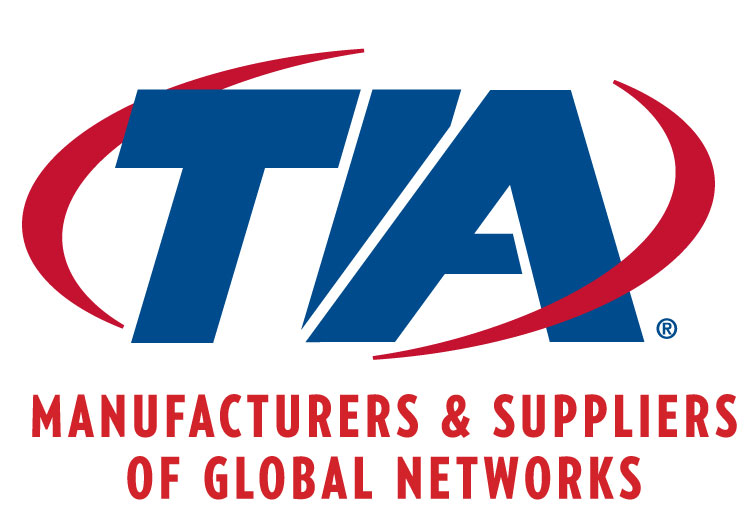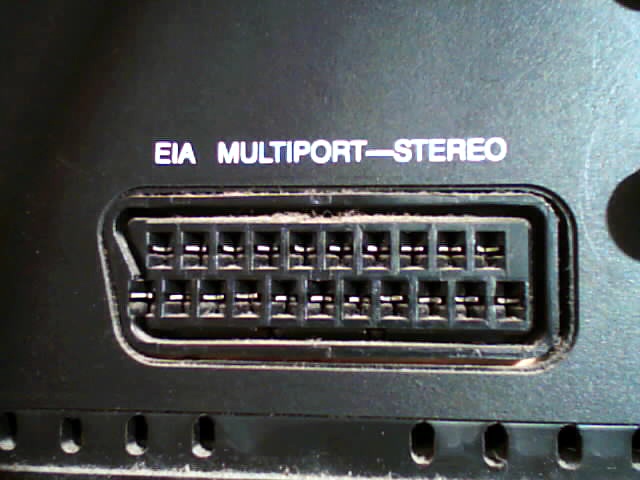|
IS-641
TIA/EIA standard IS-641 is a speech coding standard used in some computer and telecommunications networks in the U.S.A. The main usage was in the U.S. TDMA networks defined by IS-136. The bit rate of the speech codec A codec is a device or computer program that encodes or decodes a data stream or signal. ''Codec'' is a portmanteau of coder/decoder. In electronic communications, an endec is a device that acts as both an encoder and a decoder on a signal or da ... is 7.4 kbit/s. This codec is the same as the 7.4 kbit/s mode in the AMR speech codec. The standard has been superseded by TIA/EIA-136-410. Speech codecs Mobile telecommunications standards {{Telecomm-stub ... [...More Info...] [...Related Items...] OR: [Wikipedia] [Google] [Baidu] |
Adaptive Multi-Rate
The Adaptive Multi-Rate (AMR, AMR-NB or GSM-AMR) audio codec is an audio compression format optimized for speech coding. AMR speech codec consists of a multi-rate narrowband speech codec that encodes narrowband (200–3400 Hz) signals at variable bit rates ranging from 4.75 to 12.2 kbit/s with toll quality speech starting at 7.4 kbit/s. AMR was adopted as the standard speech codec by 3GPP in October 1999 and is now widely used in GSM and UMTS. It uses link adaptation to select from one of eight different bit rates based on link conditions. AMR is also a file format for storing spoken audio using the AMR codec. Many modern mobile telephone handsets can store short audio recordings in the AMR format, and both Free software, free and proprietary programs exist (see #Software support, Software support) to convert between this and other formats, although AMR is a speech format and is unlikely to give ideal results for other audio. The common filename extension is .amr. ... [...More Info...] [...Related Items...] OR: [Wikipedia] [Google] [Baidu] |
Telecommunications Industry Association
The Telecommunications Industry Association (TIA) is accredited by the American National Standards Institute (ANSI) to develop voluntary, consensus-based industry standards for a wide variety of Information and Communication Technologies (Information and communication technologies, ICT) products, and currently represents nearly 400 companies. TIA's Standards and Technology Department operates twelve engineering committees, which develop guidelines for private radio equipment, cellular towers, data terminals, satellites, telephone terminal equipment, accessibility, VoIP devices, structured cabling, data centers, mobile device communications, multimedia multicast, vehicular telematics, healthcare ICT, Machine to machine, machine to machine communications, and smart grid, smart utility networks. Active participants include communications equipment manufacturers, service providers, government agencies, academic institutions, and end-users are engaged in TIA's standards setting proc ... [...More Info...] [...Related Items...] OR: [Wikipedia] [Google] [Baidu] |
Electronic Industries Alliance
The Electronic Industries Alliance (EIA; until 1997 Electronic Industries Association) was an American standards and trade organization composed as an alliance of trade associations for electronics manufacturers in the United States. They developed standards to ensure the equipment of different manufacturers was compatible and interchangeable. The EIA ceased operations on February 11, 2011, but the former sectors continue to serve the constituencies of EIA. History In 1924, 50 radio manufacturers in Chicago formed a trade group called the ''Associated Radio Manufacturers''. This organization was designed to control the licensing of the large number of radio patents so that each member could have access to all the relevant patents necessary to build radio transmitters, antennas and receivers. Over time, new electronic technologies brought new members, non-manufacturer members, and name changes. Names in chronological order: * 1924 – ''Associated Radio Manufacturers'' * ... [...More Info...] [...Related Items...] OR: [Wikipedia] [Google] [Baidu] |
Speech Coding
Speech coding is an application of data compression of digital audio signals containing speech. Speech coding uses speech-specific parameter estimation using audio signal processing techniques to model the speech signal, combined with generic data compression algorithms to represent the resulting modeled parameters in a compact bitstream. Some applications of speech coding are mobile telephony and voice over IP (VoIP). The most widely used speech coding technique in mobile telephony is linear predictive coding (LPC), while the most widely used in VoIP applications are the LPC and modified discrete cosine transform (MDCT) techniques. The techniques employed in speech coding are similar to those used in audio data compression and audio coding where knowledge in psychoacoustics is used to transmit only data that is relevant to the human auditory system. For example, in voiceband speech coding, only information in the frequency band 400 to 3500 Hz is transmitted but the reconst ... [...More Info...] [...Related Items...] OR: [Wikipedia] [Google] [Baidu] |
Computer Network
A computer network is a set of computers sharing resources located on or provided by network nodes. The computers use common communication protocols over digital interconnections to communicate with each other. These interconnections are made up of telecommunication network technologies, based on physically wired, optical, and wireless radio-frequency methods that may be arranged in a variety of network topologies. The nodes of a computer network can include personal computers, servers, networking hardware, or other specialised or general-purpose hosts. They are identified by network addresses, and may have hostnames. Hostnames serve as memorable labels for the nodes, rarely changed after initial assignment. Network addresses serve for locating and identifying the nodes by communication protocols such as the Internet Protocol. Computer networks may be classified by many criteria, including the transmission medium used to carry signals, bandwidth, communications pro ... [...More Info...] [...Related Items...] OR: [Wikipedia] [Google] [Baidu] |
Telecommunications Network
A telecommunications network is a group of nodes interconnected by telecommunications links that are used to exchange messages between the nodes. The links may use a variety of technologies based on the methodologies of circuit switching, message switching, or packet switching, to pass messages and signals. Multiple nodes may cooperate to pass the message from an originating node to the destination node, via multiple network hops. For this routing function, each node in the network is assigned a network address for identification and locating it on the network. The collection of addresses in the network is called the address space of the network. Examples of telecommunications networks include computer networks, the Internet, the public switched telephone network (PSTN), the global Telex network, the aeronautical ACARS network, and the wireless radio networks of cell phone telecommunication providers. Network structure In general, every telecommunications network conceptually ... [...More Info...] [...Related Items...] OR: [Wikipedia] [Google] [Baidu] |
Time-division Multiple Access
Time-division multiple access (TDMA) is a channel access method for shared-medium networks. It allows several users to share the same frequency channel by dividing the signal into different time slots. The users transmit in rapid succession, one after the other, each using its own time slot. This allows multiple stations to share the same transmission medium (e.g. radio frequency channel) while using only a part of its channel capacity. Dynamic TDMA is a TDMA variant that dynamically reserves a variable number of time slots in each frame to variable bit-rate data streams, based on the traffic demand of each data stream. TDMA is used in the digital 2G cellular systems such as Global System for Mobile Communications (GSM), IS-136, Personal Digital Cellular (PDC) and iDEN, and in the Digital Enhanced Cordless Telecommunications (DECT) standard for portable phones. TDMA was first used in satellite communication systems by Western Union in its Westar 3 communications satellite ... [...More Info...] [...Related Items...] OR: [Wikipedia] [Google] [Baidu] |
Codec
A codec is a device or computer program that encodes or decodes a data stream or signal. ''Codec'' is a portmanteau of coder/decoder. In electronic communications, an endec is a device that acts as both an encoder and a decoder on a signal or data stream, and hence is a type of codec. ''Endec'' is a portmanteau of encoder/decoder. A coder or encoder encodes a data stream or a signal for transmission or storage, possibly in encrypted form, and the decoder function reverses the encoding for playback or editing. Codecs are used in videoconferencing, streaming media, and video editing applications. History In the mid-20th century, a codec was a device that coded analog signals into digital form using pulse-code modulation (PCM). Later, the name was also applied to software for converting between digital signal formats, including companding functions. Examples An audio codec converts analog audio signals into digital signals for transmission or encodes them for storage. A receiv ... [...More Info...] [...Related Items...] OR: [Wikipedia] [Google] [Baidu] |
Speech Codecs
Speech is a human vocal communication using language. Each language uses phonetic combinations of vowel and consonant sounds that form the sound of its words (that is, all English words sound different from all French words, even if they are the same word, e.g., "role" or "hotel"), and using those words in their semantic character as words in the lexicon of a language according to the syntactic constraints that govern lexical words' function in a sentence. In speaking, speakers perform many different intentional speech acts, e.g., informing, declaring, asking, persuading, directing, and can use enunciation, intonation, degrees of loudness, tempo, and other non-representational or paralinguistic aspects of vocalization to convey meaning. In their speech, speakers also unintentionally communicate many aspects of their social position such as sex, age, place of origin (through accent), physical states (alertness and sleepiness, vigor or weakness, health or illness), psychological ... [...More Info...] [...Related Items...] OR: [Wikipedia] [Google] [Baidu] |



